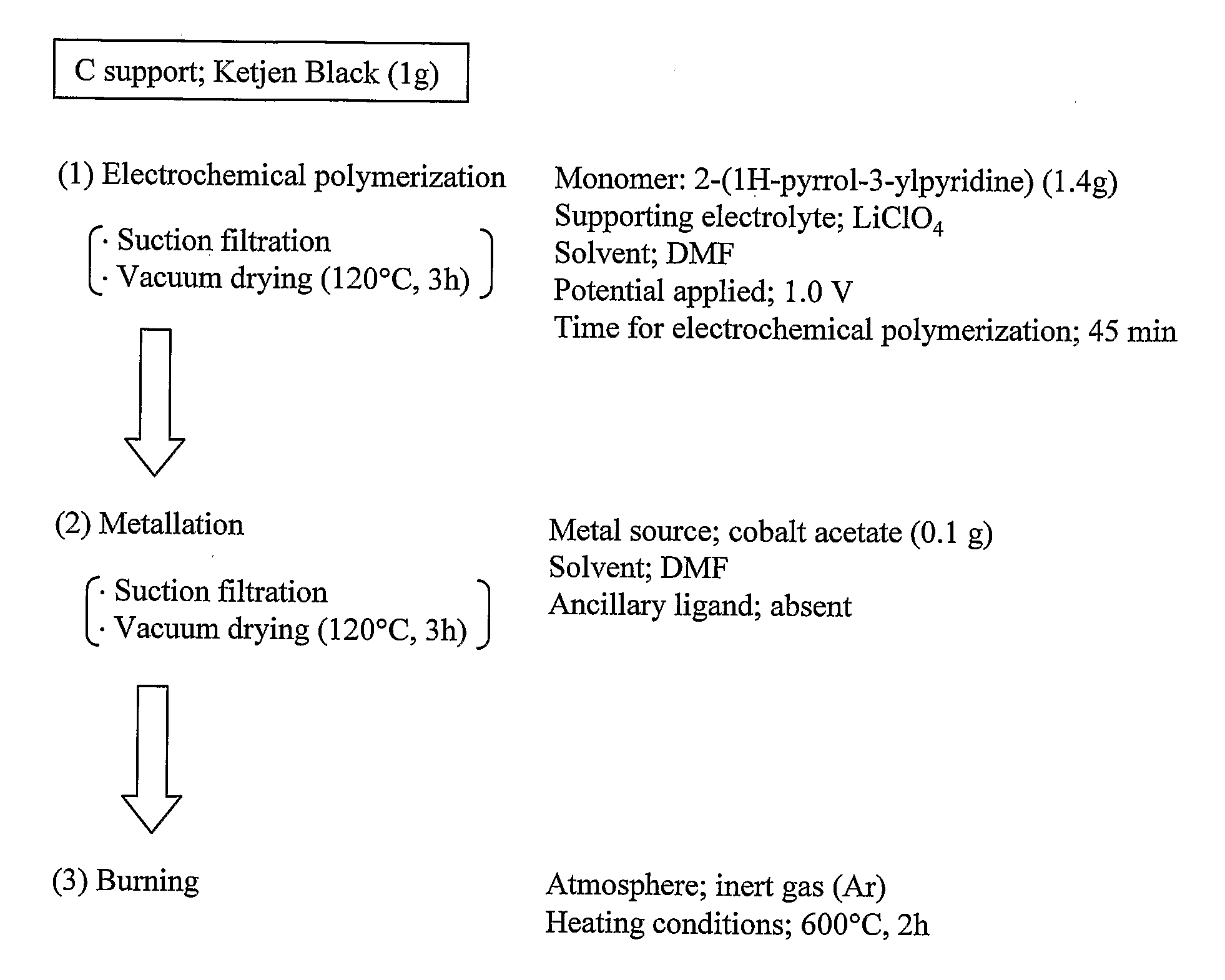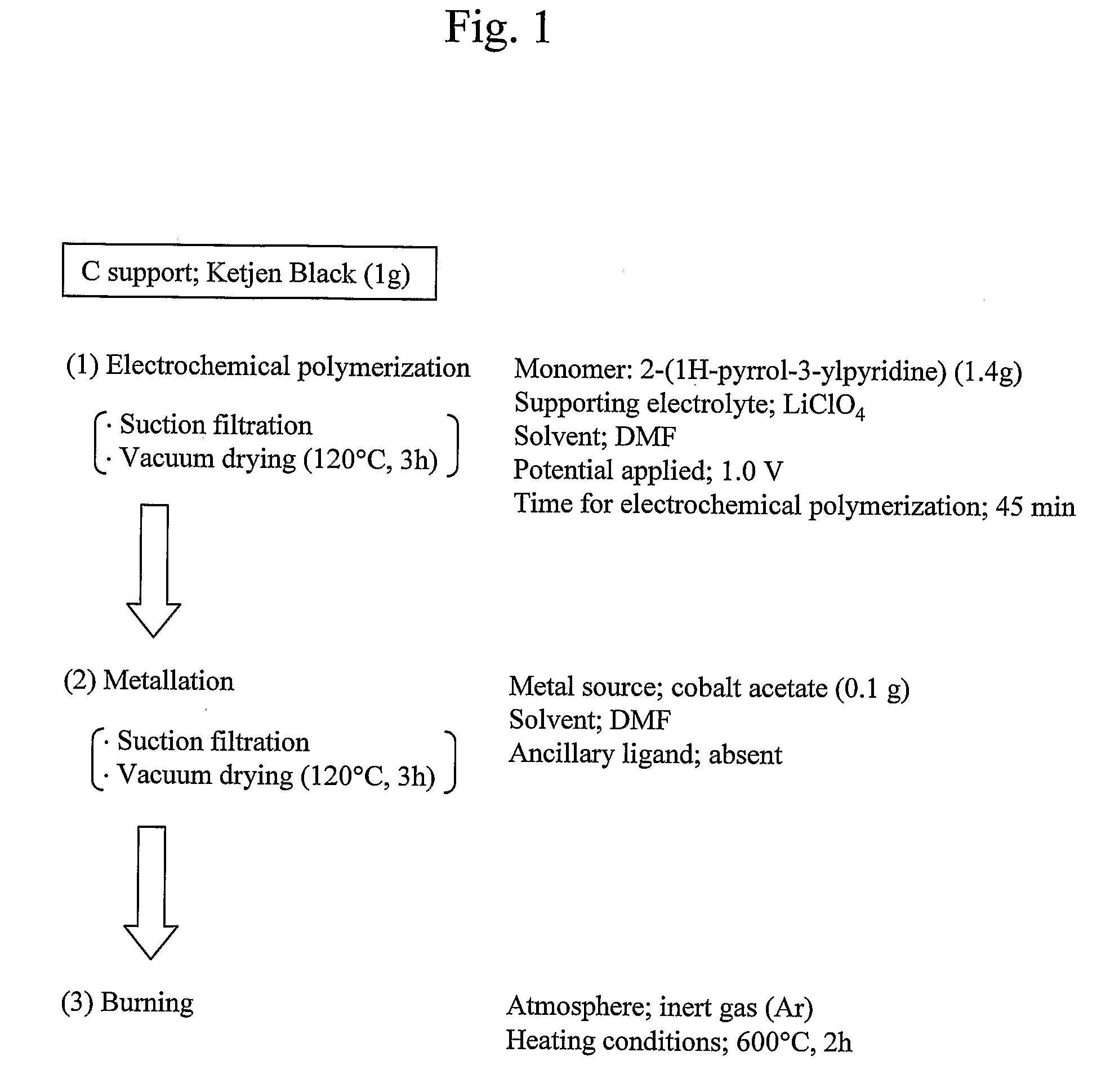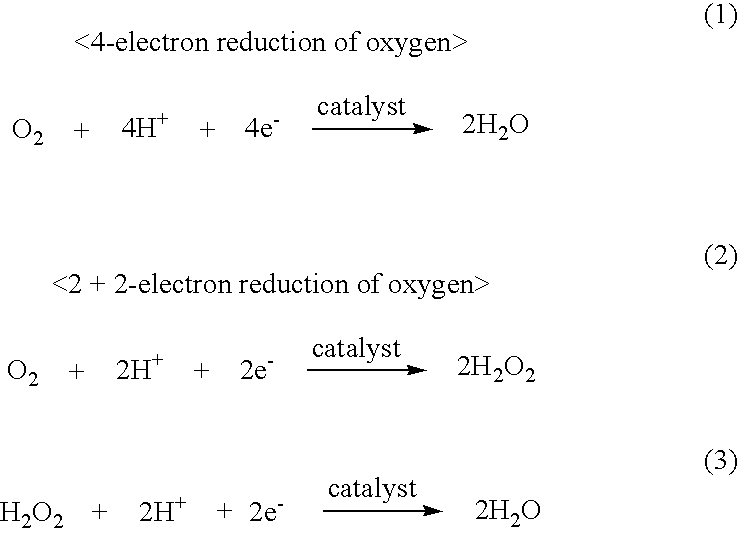Catalyst material and process for preparing the same
- Summary
- Abstract
- Description
- Claims
- Application Information
AI Technical Summary
Benefits of technology
Problems solved by technology
Method used
Image
Examples
example 1
Preparation Through Electrochemical Polymerization of a Polymerizable Ligand, 2-(1H-Pyrrol-3-Ylpyridine)
[0057]A catalyst material was prepared, following the flow shown in FIG. 1, using 2-(1H-pyrrol-3-ylpyridine) (pyPy), a polymerizable ligand where pyridine, which has a strong coordination property to Co, and pyrrole, which is polymerizable, are bonded together, so that the material had an increased density of “Co—N4 structure”.
(1) “Electrochemical Polymerization”
[0058]In 200 ml of DMF solvent containing 0.1 M LiClO4 as a supporting electrolyte, was dissolved 1.4 g of 2-(1H-pyrrol-3-ylpyridine) (pyPy) and 1 g of carbon particles (Ketjen). After 30-minute argon deaeration, electrochemical polymerization was performed using a fluidized bed electrode for 45 minutes by constant potential method at an applied voltage of 1.0 to yield poly(2-(1H-pyrrol-3-ylpyridine))-coated carbon particles.
[0059]The amount of 2-(1H-pyrrol-3-ylpyridine) used was 10 times larger the amount calculated based...
example 2
Preparation Using a Polymerizable Ligand, 2-(1H-Pyrrol-3-Ylpyridine) without Causing Polymerization
[0084]To allow a catalyst material to have an increased density of “Co—N4 structure”, 2-(1H-pyrrol-3-ylpyridine) (pyPy), a polymerizable ligand where pyridine, which has a strong coordination property to Co, and pyrrole, which is polymerizable, are bonded together, as a polynuclear complex molecules, was physically adsorbed on a carbon support to develop oxygen reduction activity. A fuel cell cathode catalyst was prepared using this.
[0085]The results of Example 2 are shown in Table 2.
TABLE 2Peak potentialPeak currentProcess for supportingEpdensity Ipcatalyst on carbon supportSolventBurning[V vs. SCE](mA / cm2)NotesElectrochemicalDMFAbsent+0.011.42For comparisonpolymerizationElectrochemicalDMFPresent+0.050.62For comparisonpolymerization(600° C.)Physical adsorptionDMFAbsent+0.200.89Example of thepresent inventionPhysical adsorptionDMFPresentExample of the(600° C.)present invention
[0086]The...
PUM
| Property | Measurement | Unit |
|---|---|---|
| Temperature | aaaaa | aaaaa |
| Electric potential / voltage | aaaaa | aaaaa |
| Weight | aaaaa | aaaaa |
Abstract
Description
Claims
Application Information
 Login to View More
Login to View More - R&D
- Intellectual Property
- Life Sciences
- Materials
- Tech Scout
- Unparalleled Data Quality
- Higher Quality Content
- 60% Fewer Hallucinations
Browse by: Latest US Patents, China's latest patents, Technical Efficacy Thesaurus, Application Domain, Technology Topic, Popular Technical Reports.
© 2025 PatSnap. All rights reserved.Legal|Privacy policy|Modern Slavery Act Transparency Statement|Sitemap|About US| Contact US: help@patsnap.com



